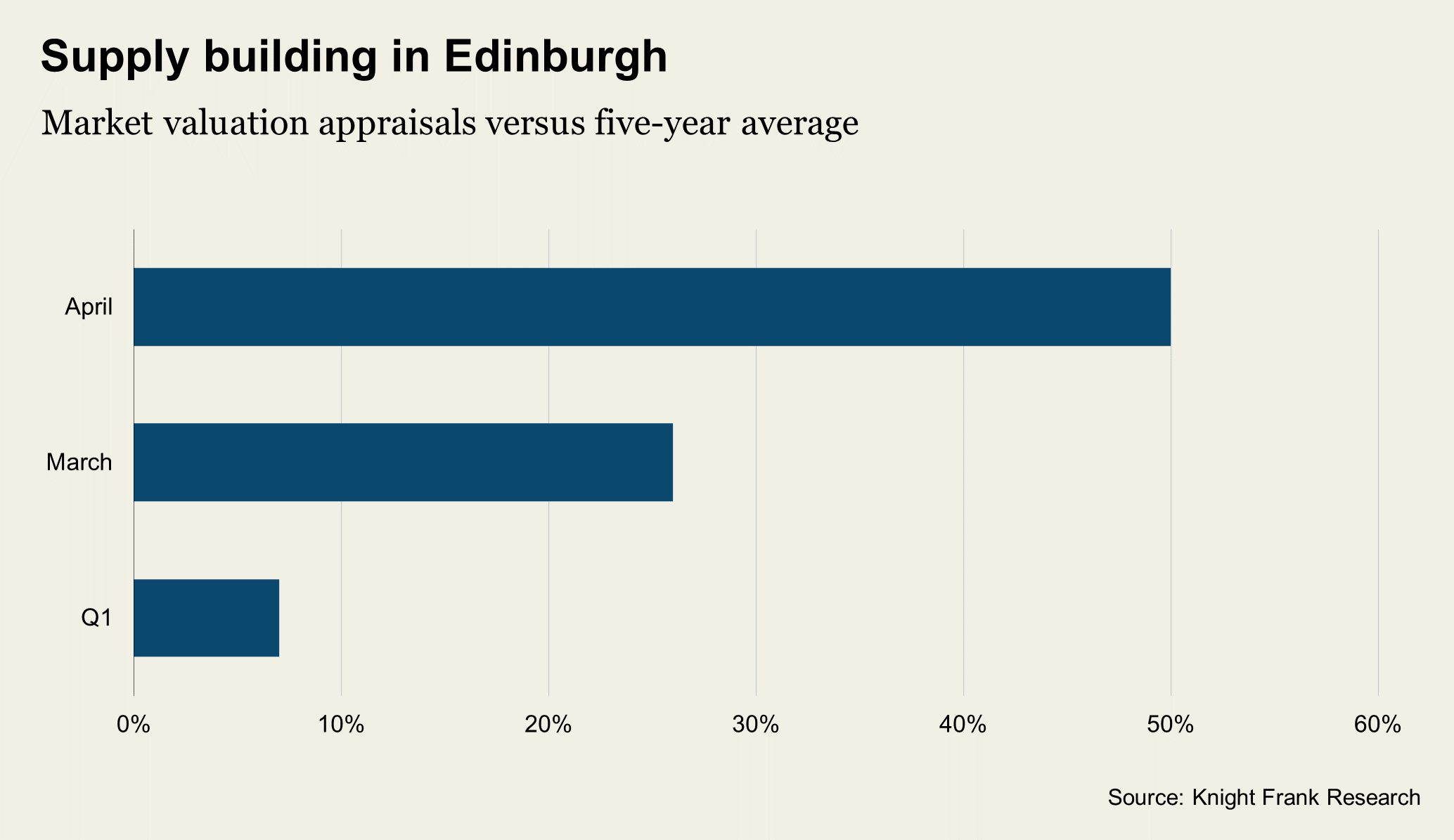Transactions in Edinburgh to rise as improved weather boosts supply
Annual price growth in Scottish capital declines as supply re-builds
2 minutes to read
Edinburgh Index 132.6 / Quarterly change -0.2% / Annual change 5.7%
After a strong finish to 2022, the Edinburgh City market has made a slower start to 2023.
However, with the arrival of better weather supply is building, which will support trading volumes and maintain downwards pressure on prices.
Market valuation appraisals in the Scottish capital were up 50% versus the five-year average in April, compared with an increase of 26% in March (see chart).
“There are a lot of new instructions coming onto the market and it’s going to be a busy period, albeit there isn’t quite the strength in depth in terms of active buyers that we experienced in recent years,” said Edward Douglas-Home, head of Scotland residential at Knight Frank.

As in the fourth quarter of last year, prices remain broadly flat. In the three months to March the average price of a property in Edinburgh declined by 0.2% compared with the previous quarter.
This saw the annual rate of growth decline from 8% in December to 5.7% in March.
With an increase in supply the volume of viewings is climbing too. Viewings in April were down 22% versus the five-year average compared with -48% in March.
The family house market is performing particularly strongly, with homes in sought after locations still achieving more than their home report valuations. Viewings between £1m and £2m were up by 118% in April versus the five-year average and offers made by 108%.
While the UK property and mortgage markets have now stabilised six months on from the shock caused by the mini-Budget, buyers remain cautious.
“Where we might have seen eight offers at the closing date a year ago it’s closer to three now. Strong prices are still being achieved but it’s the closest we’ve seen to a ‘normal’ spring market since the pandemic,” said Ricardo Volpi at Knight Frank Edinburgh.
As in other parts of the UK, the coming months will test the strength of buyer appetite against a backdrop of higher borrowing costs, with the bank rate at a 14-year high of 4.5%.
We expect buyers’ reduced spending power and an increase in supply will see prime regional prices decline by a few percent during 2023.
Image by Anita from Pixabay